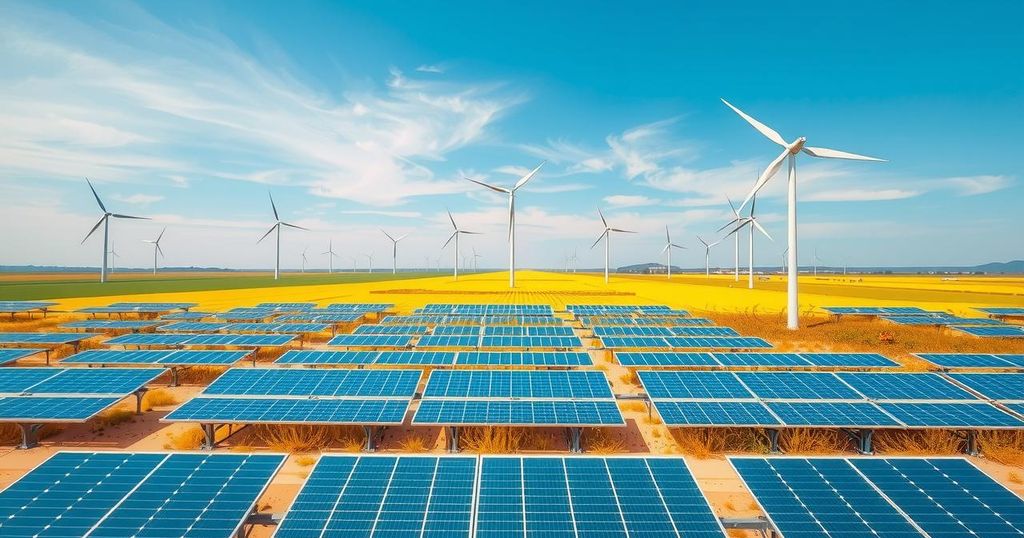China Surpasses Japan in Green Hydrogen Innovation and Patents

China has surpassed Japan in green hydrogen innovation and patents, driven by massive investments. Analysis of 180,000 patents shows Chinese firms lead in several key areas, raising concerns about their potential domination of the hydrogen vehicle supply chain. In response, Japan is offering subsidies and collaborating internationally as its hydrogen strategy faces competition.
China’s green hydrogen sector is rapidly advancing thanks to significant investments from its companies. Recent research by Japanese firm Astamuse reveals that Chinese firms have now surpassed Japan in low-carbon hydrogen-related patents, marking a major shift in the clean energy arena. This development is particularly notable given China’s rapid advancement since it announced its carbon peak targets back in 2020, which has directly influenced its innovation in hydrogen technologies.
Astamuse’s findings are based on the analysis of around 180,000 green hydrogen patents filed between 2013 and 2022. The study evaluates these patents across five main categories: production, storage, transport and supply, safety management, and end use. Impressively, Chinese enterprises topped the rankings in overall competitiveness and in four of those categories. A prior study covering 140,000 patents from 2011 to 2020 showed Japan ranked first; however, the recent surge in Chinese patent filings indicates a clear shift in the landscape.
Since implementing its national hydrogen strategy in 2022, China has prioritized hydrogen’s role alongside renewable energy. The ambitious target was to ramp up green hydrogen production to 100,000-200,000 tons annually by 2025—a goal that has already been exceeded. While Japan had its hydrogen strategy set earlier, China’s aggressive investment and development have greatly accelerated its industry’s progress across the board.
This influx of patents has also dramatically slashed the cost of hydrogen production equipment in China, making it about 25% of what is found in Europe. Such cost efficiencies have naturally created significant local demand for hydrogen, cementing China’s position as the world’s largest hydrogen market, responsible for 30% of global demand according to the International Energy Agency (IEA).
Chinese companies, particularly solar giants like LONGi and Sungrow, are not only leading in green hydrogen innovation but are also expanding their capacity to establish market dominance rather than solely focusing on immediate profits. Zhang Xiaoguang from Daiwa Research Institute highlights this strategy, noting the integration of strengths from the solar and wind sectors into their hydrogen endeavors.
As the competitive landscape continues to evolve, concerns regarding hydrogen-powered vehicles arise. Mitsumasa Yamagata, President of Toyota’s Hydrogen Business Unit, emphasizes that China’s infrastructure for hydrogen trucks is already ahead, with associated fuel costs being a mere third of those in Japan. Without a concerted effort from other nations to invest in their hydrogen technologies and infrastructure, there is a very real risk that Chinese firms could monopolize the hydrogen vehicle supply chain, much like they have with electric vehicles.
In response to rising competition from China, Japan is providing subsidies aimed at mitigating the cost differences between hydrogen and fossil fuels. Additionally, it is engaging in collaboration with the United States and South Korea to enhance advanced hydrogen technologies. Meanwhile, the European Union is contemplating restrictions on the incorporation of Chinese components into hydrogen projects to protect its own domestic industries.
In summary, China’s rapid expansion in the green hydrogen sector, outpacing Japan in patent filings and overall competitiveness, has sparked significant global attention. With substantial investments driving innovation, China is positioning itself as a leader in hydrogen technologies, potentially reshaping the supply chain for hydrogen vehicles. As countries respond with financial support and collaborations, the dynamics of the hydrogen market continue to evolve, highlighting the urgent need for strategic investments in clean energy frameworks worldwide.
Original Source: reccessary.com




